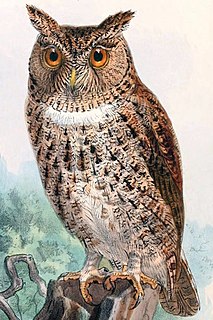Related Research Articles
Trench fever is a moderately serious disease transmitted by body lice. It infected armies in Flanders, France, Poland, Galicia, Italy, Salonika, Macedonia, Mesopotamia, Russia and Egypt in World War I. Three noted sufferers during WWI were the authors J. R. R. Tolkien, A. A. Milne, and C. S. Lewis. From 1915 to 1918 between one-fifth and one-third of all British troops reported ill had trench fever while about one-fifth of ill German and Austrian troops had the disease. The disease persists among the homeless. Outbreaks have been documented, for example, in Seattle and Baltimore in the United States among injection drug users and in Marseille, France, and Burundi.

Bartonella henselae, formerly Rochalimæa henselae, is a proteobacterium that is the causative agent of cat-scratch disease (bartonellosis).
Tick-borne diseases, which afflict humans and other animals, are caused by infectious agents transmitted by tick bites. They are caused by infection with a variety of pathogens, including rickettsia and other types of bacteria, viruses, and protozoa. Because individual ticks can harbor more than one disease-causing agent, patients can be infected with more than one pathogen at the same time, compounding the difficulty in diagnosis and treatment. 16 tick-borne diseases of humans are known, of which four have been discovered since 2013.

Bartonella is a genus of Gram-negative bacteria. It is the only genus in the family Bartonellaceae. Facultative intracellular parasites, Bartonella species can infect healthy people, but are considered especially important as opportunistic pathogens. Bartonella species are transmitted by vectors such as ticks, fleas, sand flies, and mosquitoes. At least eight Bartonella species or subspecies are known to infect humans.

Carrion's disease is an infectious disease produced by Bartonella bacilliformis infection.
Bartonellosis is an infectious disease produced by bacteria of the genus Bartonella. Bartonella species cause diseases such as Carrión's disease, trench fever, cat-scratch disease, bacillary angiomatosis, peliosis hepatis, chronic bacteremia, endocarditis, chronic lymphadenopathy, and neurological disorders.

Bacillary angiomatosis (BA) is a form of angiomatosis associated with bacteria of the genus Bartonella.

Wallace's scops owl lives on Sumbawa and Flores islands, in the Lesser Sundas chain of Indonesia. It is not rare in most of its habitat and has no subspecies except for the nominate. It is also known as the Lesser Sunda scops owl.

Bartonella bacilliformis is a proteobacterium, Gram negative aerobic, pleomorphic, flagellated, motile, coccobacillary, 2–3 μm long, 0.2–0.5 μm wide, and a facultative intracellular bacterium.
Bartonella quintana, originally known as Rochalimaea quintana, and "Rickettsia quintana", is a bacterium transmitted by the human body louse that causes trench fever. This bacterial species caused outbreaks of trench fever affecting 1 million soldiers in Europe during World War I.

Intasuchus is an extinct genus of temnospondyl amphibian from the Middle Permian of Russia. It is known from a single species, Intasuchus silvicola, which was named in 1956. Intasuchus belongs to the family Intasuchidae and is probably its sole member, although other taxa such as Syndyodosuchus and Cheliderpeton have been assigned to the family in the past. Intasuchus most likely belongs to the group Archegosauroidea, Permian relatives of the large, mostly Mesozoic temnospondyl clade Stereospondyli.

Arctostaphylos silvicola is a species of manzanita known by the common names Bonny Doon or silverleaf manzanita. It is endemic to the sandhills of the southern Santa Cruz Mountains in California's Santa Cruz and Santa Clara counties.

Cat-scratch disease (CSD) or felinosis is an infectious disease that most often results from a scratch or bite of a cat. Symptoms typically include a non-painful bump or blister at the site of injury and painful and swollen lymph nodes. People may feel tired, have a headache, or a fever. Symptoms typically begin within 3–14 days following infection.
Bartonella talpae, formerly belonging to the Grahamella genus, is a proteobacterium. As with other Bartonella species, it can cause disease in animals.
Bartonella taylorii is a proteobacterium. As with other Bartonella species, it can cause disease in animals.
Bartonella doshiae is a proteobacterium. As with other Bartonella species, it can cause disease in animals.
Bartonella australis is a Gram-negative bacterium of the genus Bartonella which was isolated from eastern grey kangaroos.
Bartonella florencae is a bacterium from the genus of Bartonella which has been isolated from a dead shrew from Calanque d'En-Vau in France.
Bartonella ancashensis is a bacterium from the genus Bartonella which has been isolated from blood from patients who suffered from verruga peruana in Caraz in Peru. Bartonella ancashensis is a human pathogen which may cause verruga peruana.
Bartonella saheliensis is a Gram-negative bacterium from the genus Bartonella which has been isolated from the blood of a Kemp's gerbil from Sine-Saloum in Senegal.
References
- ↑ "Bartonella silvicola". www.uniprot.org.
- ↑ "Taxonomy browser (Bartonella silvicola)". www.ncbi.nlm.nih.gov.